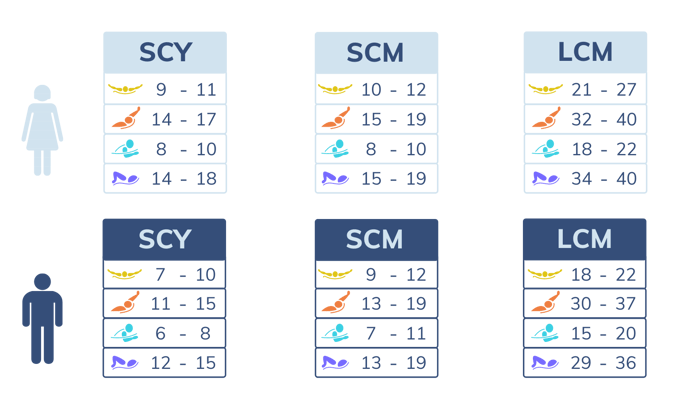Strokes
Find out how TritonWear measures strokes, and what typical numbers we see for swimmers around the world.
What is Strokes?
Strokes is simply a count of the number of strokes per lap. It’s a good measure of stroke consistency, as well as a contributing factor to DPS: higher stroke count = lower DPS.
How is it measured?
For freestyle and backstroke, Strokes are counted every time either hand enters the water. For breaststroke and butterfly, Strokes are counted every time the arms recover.
What is a good number of Strokes?
Shorter Strokes result in higher stroke counts, indicating each stroke is not being maximized. So, the goal is to have low, consistent Strokes.
Inconsistent Stroke Counts might indicate an inconsistent pace, especially in long-distance events. For instance, increased Stroke count in a lap could suggest that the swimmer is no longer pulling with sufficient force, kicking enough, or did not maximize their push-off and time underwater.
Typical Strokes Range
The number of Strokes it takes to get down the length of the pool is dependent on a number of factors, including height, strength, and technique. Check out the chart below to find out where you land for each stroke and pool length.
 How to Improve Strokes?
How to Improve Strokes?
Counting the number of Strokes per lap is a good measure of stroke consistency. It is also a contributing factor to DPS: higher stroke count = lower DPS. For freestyle and backstroke, Strokes are counted every time either hand enters the water. For breaststroke and butterfly, strokes are counted every time the arms recover. Shorter Strokes lead to higher Stroke counts, and this means that each stroke is not being maximized. So, the goal is to have low, consistent Stroke Counts.
Inconsistent Stroke Counts might indicate an inconsistent pace, especially in long-distance events. For instance, increased Stroke Count in a lap could suggest that the swimmer is no longer pulling with sufficient force, kicking enough, or did not maximize their push-off and time underwater.
Look at how different Stroke Counts affect a swimmer’s speed and overall time to determine the number of Strokes they should be targeting per lap for any given stroke or distance.
